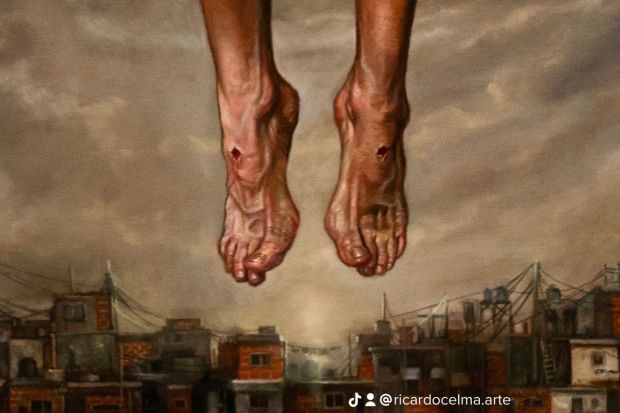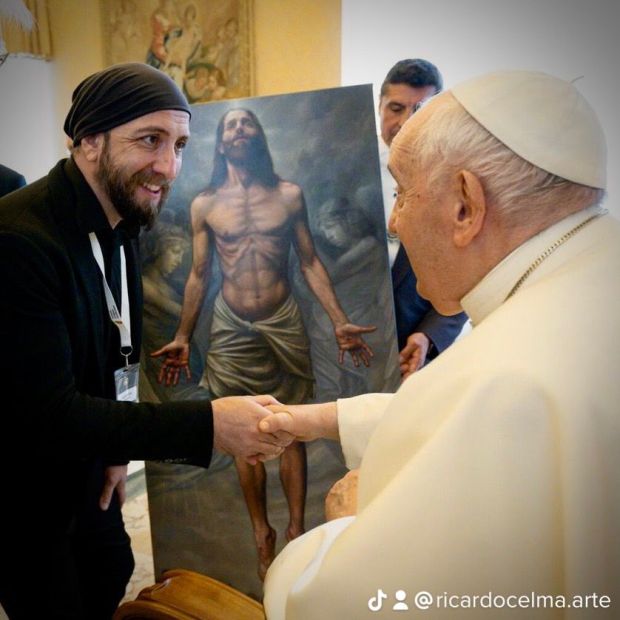Ricardo Selma has an exceptional gift for imbuing the images he creates with an uncanny realism. His talent has taken him to countless parts of the world, including Taiwan and the Vatican. Among his admirers is Pope Francis, to whom he gave one of his most emblematic works.
Argentine artist Ricardo Celma spoke with Aleteia and talked about the complex process involved in his art. Today, his work is exhibited in world-renowned spaces such as the European Museum of Modern Art (Barcelona), where until recently it was unthinkable that they would display a piece of religious art.
Inspiration and prayer

Picasso said that inspiration exists, but it has to come across us working. What is your inner preparation process?
Ricardo Selma: Inspiration is still a mysterious thing. Many times you feel that you receive a message, an idea, a call that seems not to be entirely from you, but that you are listening to something.
I was recently in Mexico looking at Our Lady of Guadalupe. I was there with my wife for a long time. Leaving the shrine, an image came to my mind of a Virgin made of flowers, who begins as flowers and whose mantle contains flowers, like a syncretism between the story of St. Juan Diego and Our Lady of Guadalupe.
(In cases like these) that image comes to me as if revealed. Afterwards, I draw it in a little notebook so that I wouldn’t forget the details. I write down what I felt at the moment and then I look for who the personage is going to be, how I want to do it, what colors the painting will have, and I start to materialize it.
Then, what came as a flash, I try to find in reality. That's the realism part; when I choose the model, light, textures... But after that, I go back to the magic part.
What place does prayer occupy in this process?
Selma: For me, prayer is very useful. It helps me to find inspiration, to focus, and concentrate.
In fact, I brought some images of Our Lady of Guadalupe for my oratory, where I ask her for inspiration.
The prayer stage for me is fundamental. Many times the idea doesn’t materialize if you’re surrounded by noise, daily life, inconveniences, problems, and vicissitudes.
It is crucial to isolate yourself a little bit, light a candle, and pray. Many times that’s what clears the way for the idea to become present again.
I have the color, the form, and the composition; but in the end, that magical thing that I try to achieve often comes with reflection.
Which of your works is the one that has the greatest meaning for you today?
Selma: One of the works I am most happy with is my painting of Veronica, because I have studied the "vera icona," the true icon. If the images are true, to what extent are they true?
It is this idea of the immaterial that becomes something more than an image. It becomes more than just a two-dimensional reproduction. It begins to be the truth of a thing. We artists work a little bit under that conception.
Why is it one of your favorites?
Selma: Analyzing that painting, it’s a work that fills me with pride for its technique. It is now on display at the European Museum of Modern Art. You don't often see art with religious or sacred tendencies in modern art museums, in general. When it happens, it happens due to speculation or even as a form of parody. To have gotten into that place is something to be proud of.
"Christ of the poor": a very special gift

What’s your most important work so far?
Selma: The most important is “The Christ of the Poor,” because it’s a vision of a timeless Christ, but in a modern-day poor neighborhood.
You gave it as a gift...
Selma: Yes, I gave it to the Pope.
I feel that this work was the fruit of inspiration. More than usual, I asked God to guide my hand, to guide my brush, and I feel that he listened to me.
I feel grateful.
Does the Virgin Mary also help you?
Selma: I have a deep devotion to Mary as an intercessor. I ask the Virgin Mary to intercede for me and to help me resolve issues that sometimes are difficult for me.











